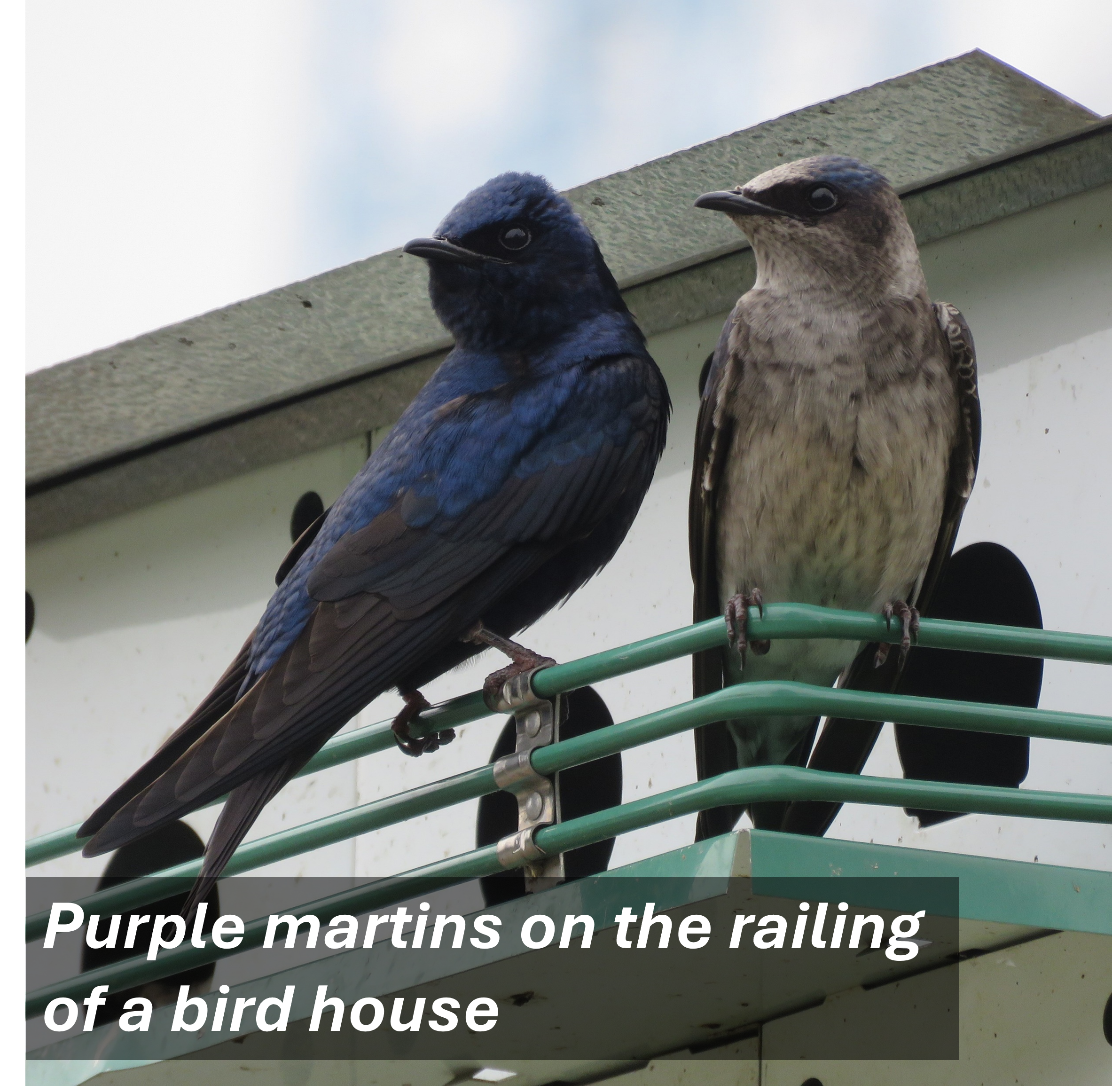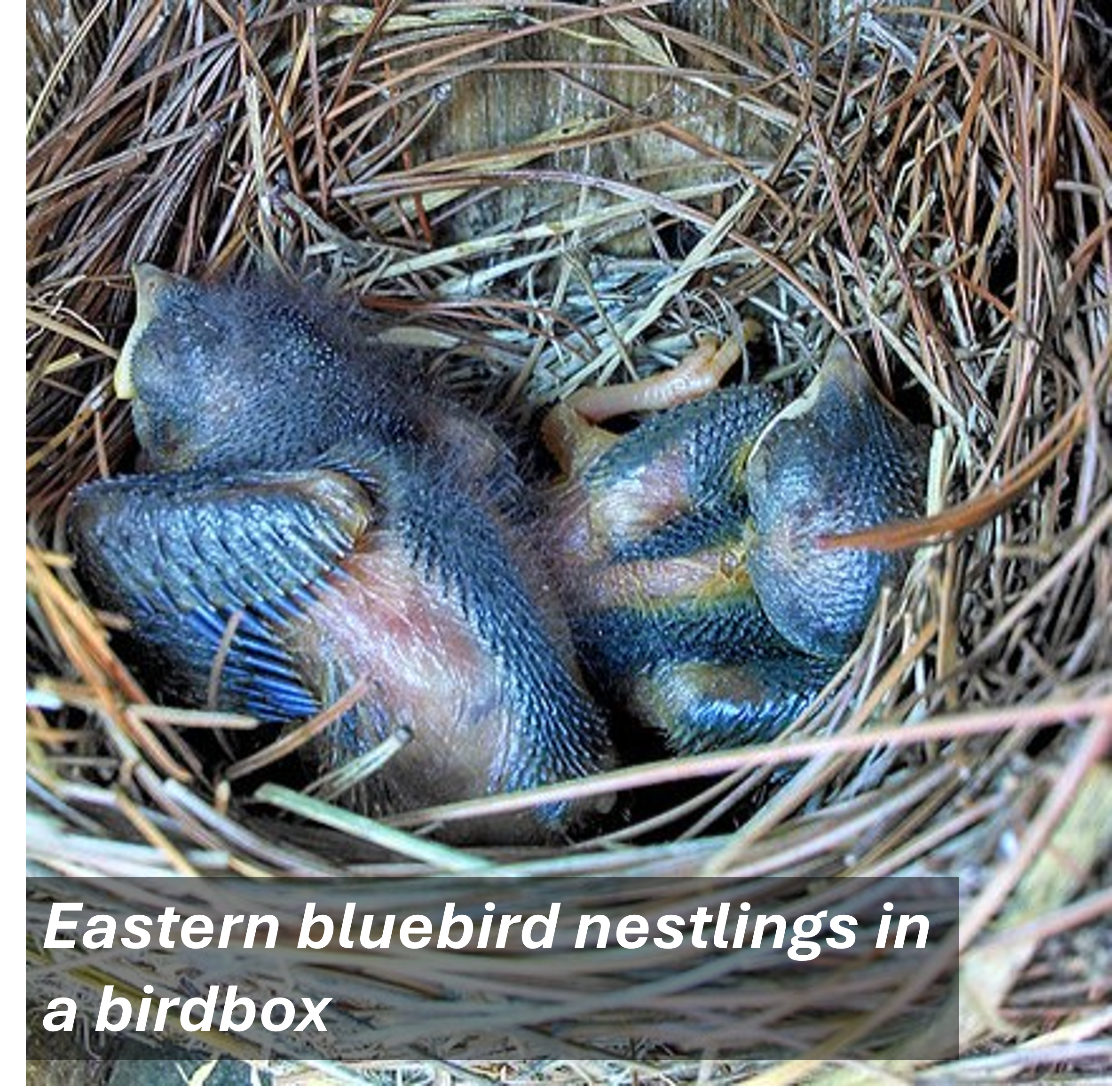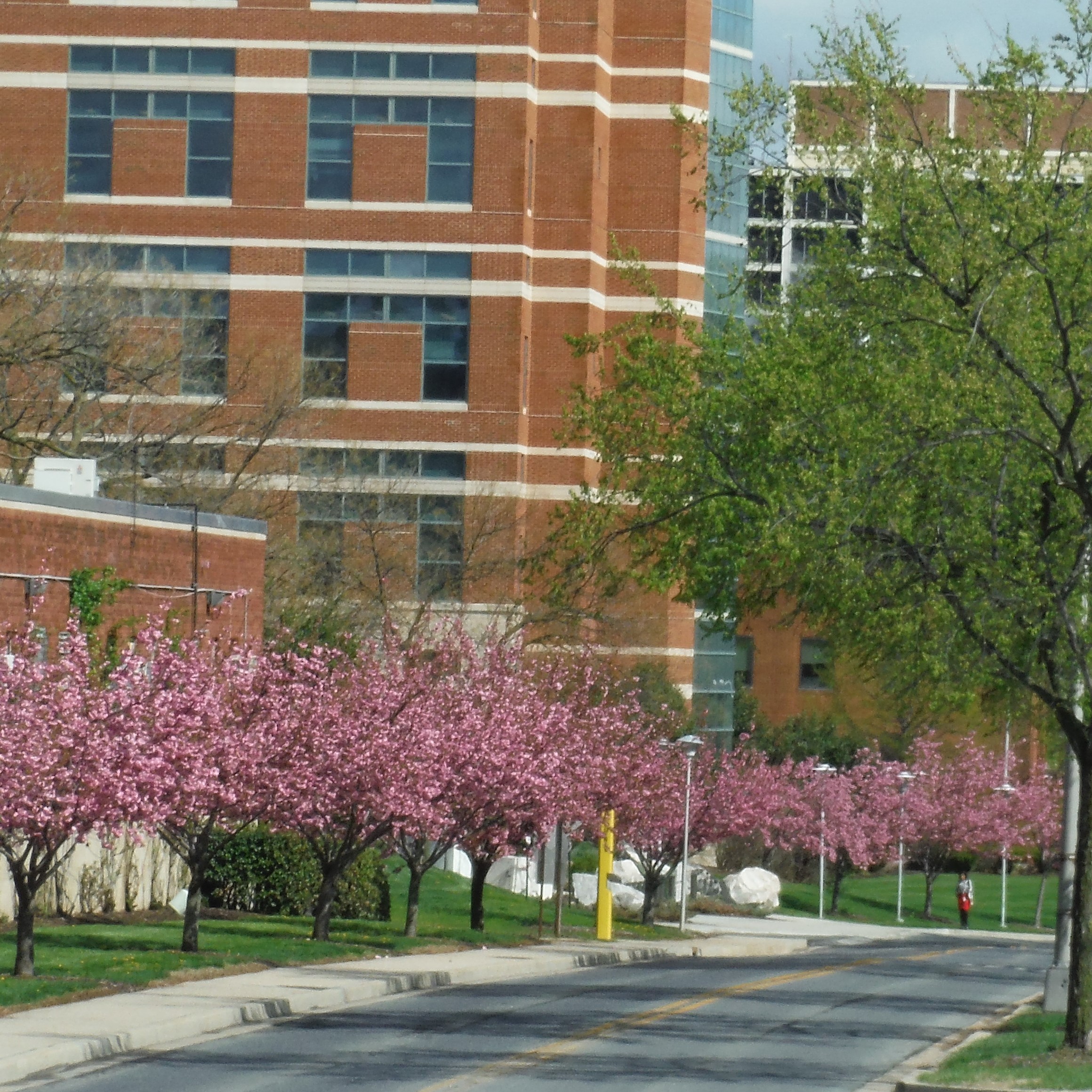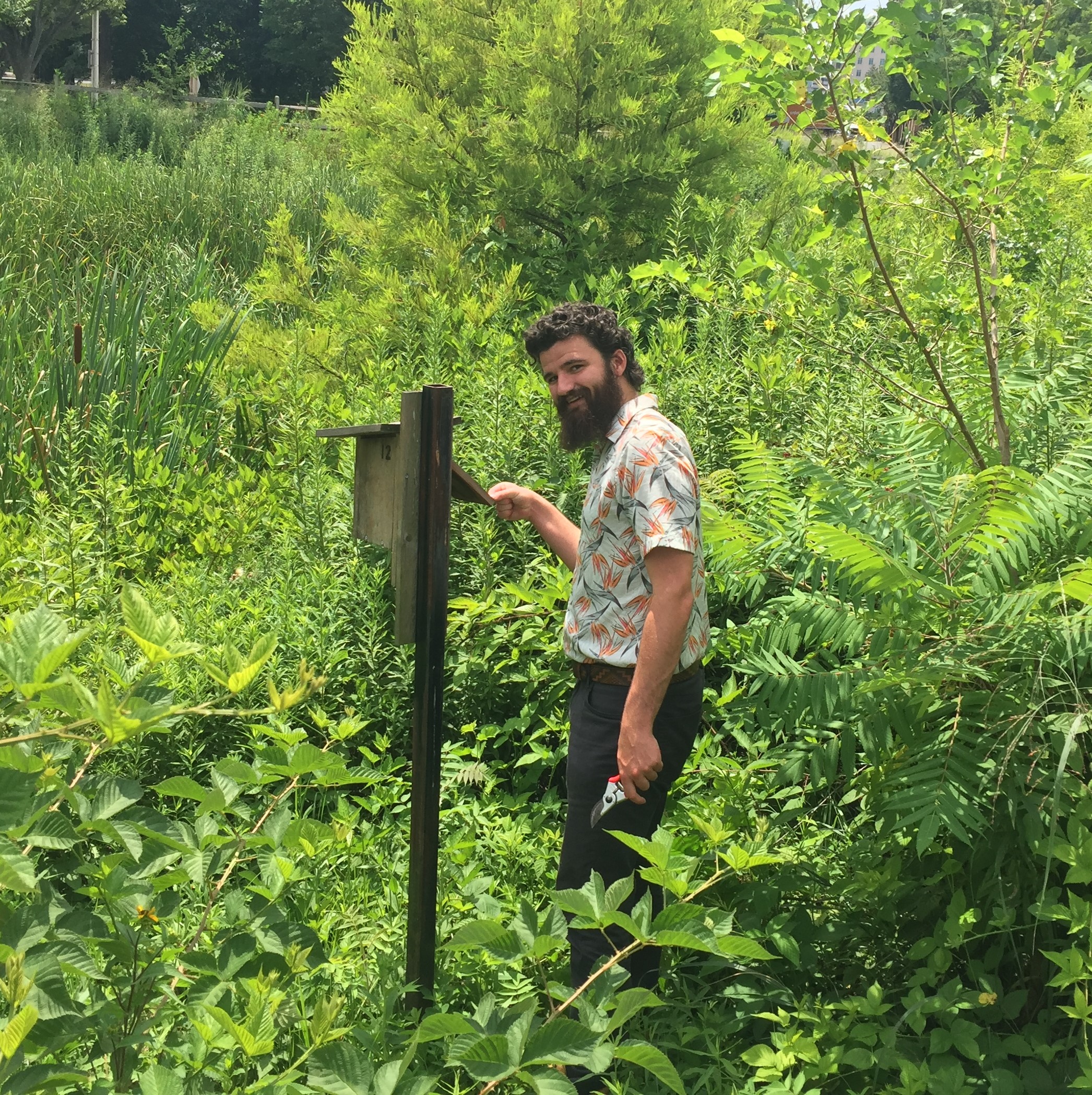
SUBSCRIBE PREVIOUS ISSUES
Featured Article
The Bluebird Box Program
In 2002, the Bluebird Box Program began at the NIH to help with conserving the Eastern bluebird (Sialia sialis) and other native, cavity-nesting bird species. Now, over 20 years later, these bird populations have grown more than 4 times larger. The Bluebird Box Program, originally started by Lynn Mueller, is currently being managed by Connor Price, the NIH Landscape Architect.

There are over 100 birdhouses at the Bethesda campus, 55 at the Poolesville campus and around 70 at Research Triangle Park. These houses provide habitat and shelter for a wide array of birds, including Eastern bluebirds, house wrens (Troglodytes aedon), Carolina chickadees (Poecile carolinensis), tree swallows (Tachycineta bicolor) and purple martins (Progne subis).1

The Eastern bluebird and other fauna are important for our campuses, as their diet makes them an excellent form of pest control. This eliminates the need for insecticides and certain herbicides, which results in both a significant cost savings and a reduction of chemical release within our local environment.
Efforts like the Bluebird Box Program serve as a beacon for successful conservation efforts. Given the reduction of farmland, the pressures from invasive species and the introduction of DDT, bluebird populations plummeted by the 1950s and 1960s. Through community group efforts towards building birdhouses, as well as the banning of DDT, the species was able to make a successful comeback.2
Maintaining the birdhouses within the Bluebird Box Program is a volunteer initiative. Currently, there are around 20 volunteers at the Bethesda campus. Starting mid-March and April, these volunteers are split into groups of 2 to 3 and assigned a trail along 1 of 9 zones within the campus. Every 2 or 3 weeks, these groups monitor the type of bird species fledglings that are in the bird houses. This helps to control invasive species, support targeted species and stay up-to-date with maintenance.
If you are interested in assisting in this initiative, please contact Connor Price.
Spotlight

|
NIH in Bloom
As spring begins to blossom all around us, Connor Price, the NIH Landscape Architect, walks us through some of the natural features available on the Bethesda Campus.
LEARN MORE
|
Take Action

|
What To Do This Earth Day
This year marks the 55th anniversary of Earth Day! Started in 1970 and globalized in 1990, Earth Day has led to several historic environmental achievements in the past. This year, the theme is “Our Power, Our Planet."
LEARN MORE |
NEMS Training
Did you know? On Tuesday, April 22, Earth Day will have officially been around for 55 years! Celebrate this milestone anniversary by doing something sustainable, however big or small. To learn more about sustainability at the NIH, please visit the NEMS Training webpage to view a short (20 minute) NIH environmental awareness training video.
Newsletter Feedback If you found this article useful, please let us know! We appreciate hearing how we might improve our future articles, including topics you would like to read about. Please take a moment to complete this quick feedback form:
The NIH Green Zone Newsletter is a publication intended to inform NIH staff about the Division of Environmental Protection and NIH Green Teams projects and initiatives. The text contained in this newsletter is not copyrighted and can be reprinted without permission. If you use portions of this newsletter in your own publication, we ask that you please credit the source. We welcome your comments and suggestions. Thank you.
|
|---|
|
Division of Environmental Protection | Office of Research Facilities | Office of Management
National Institutes of Health | U.S. Department of Health and Human Services
|